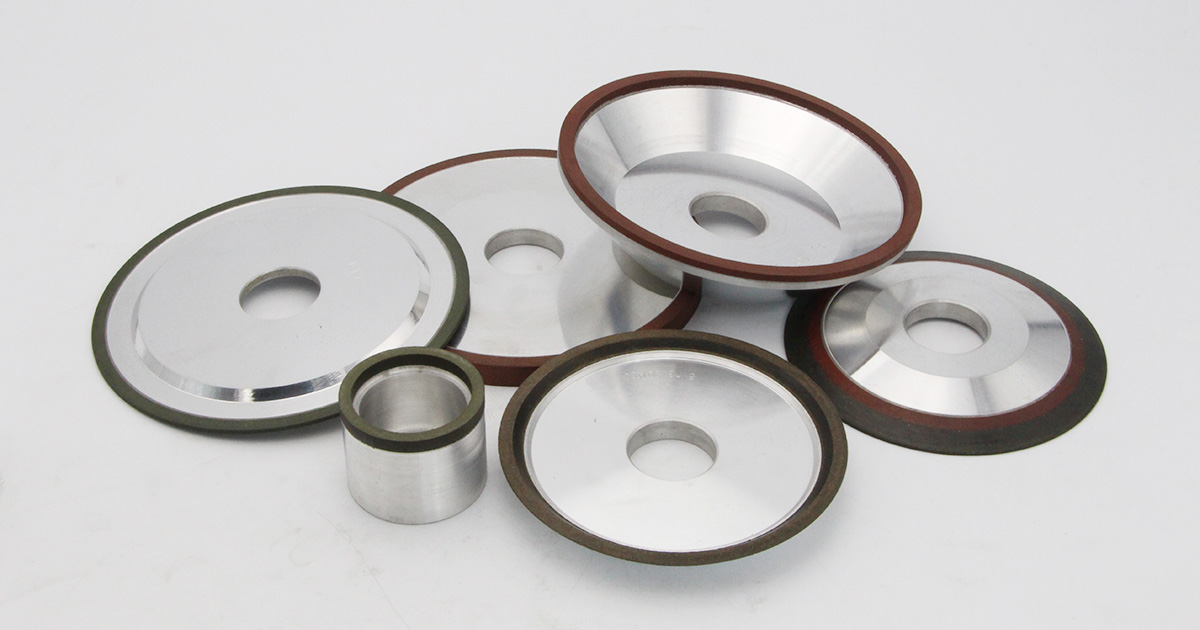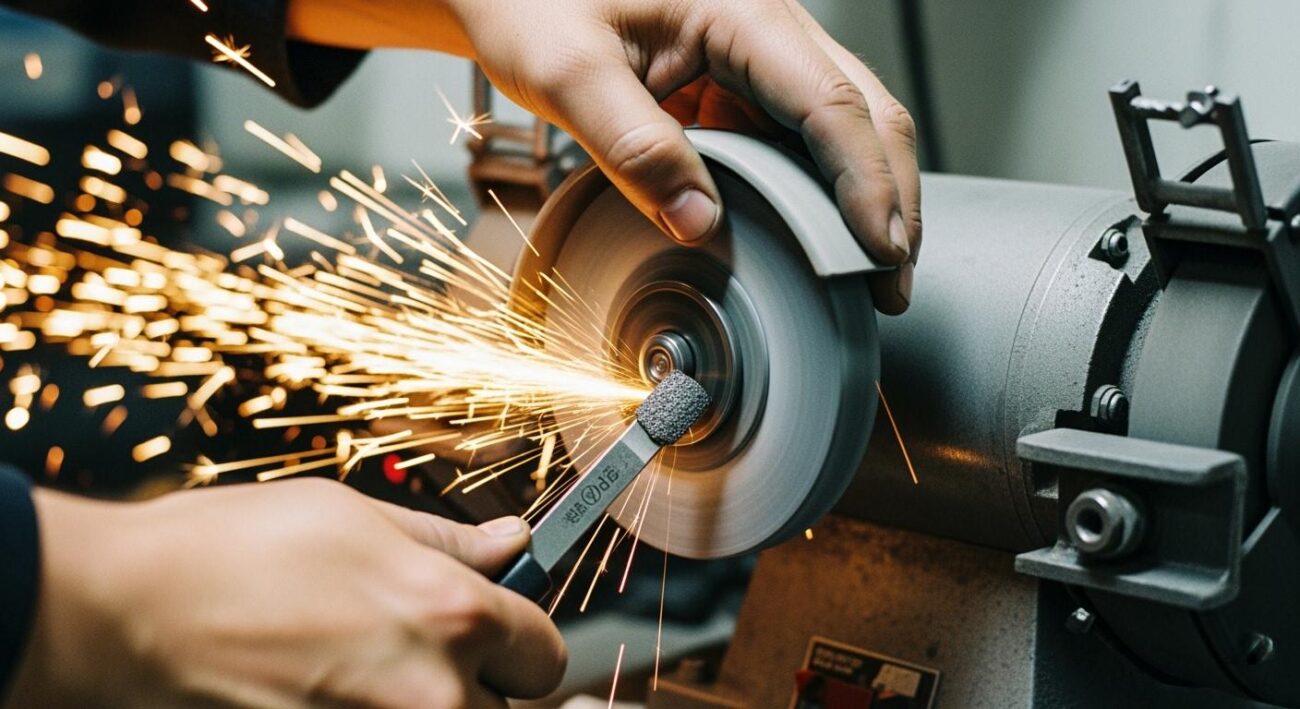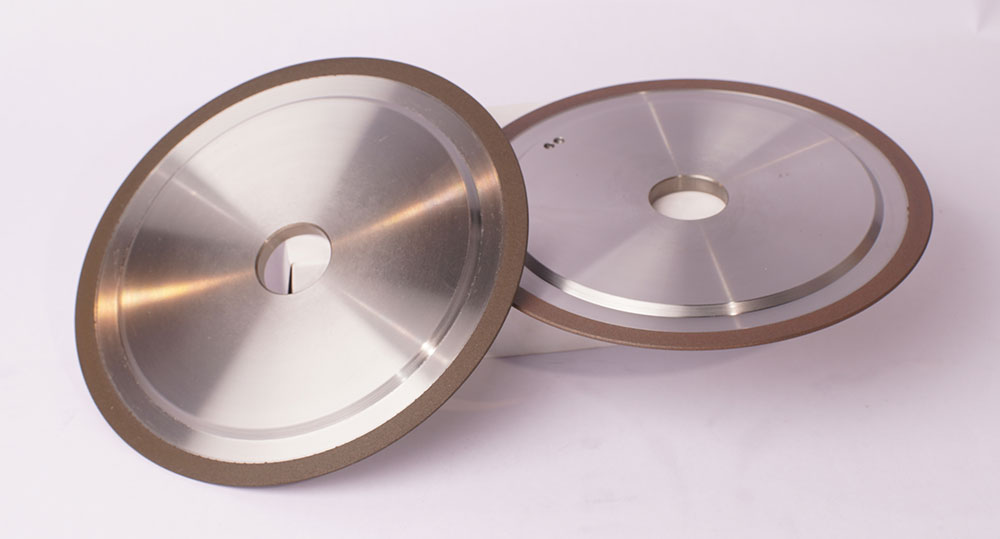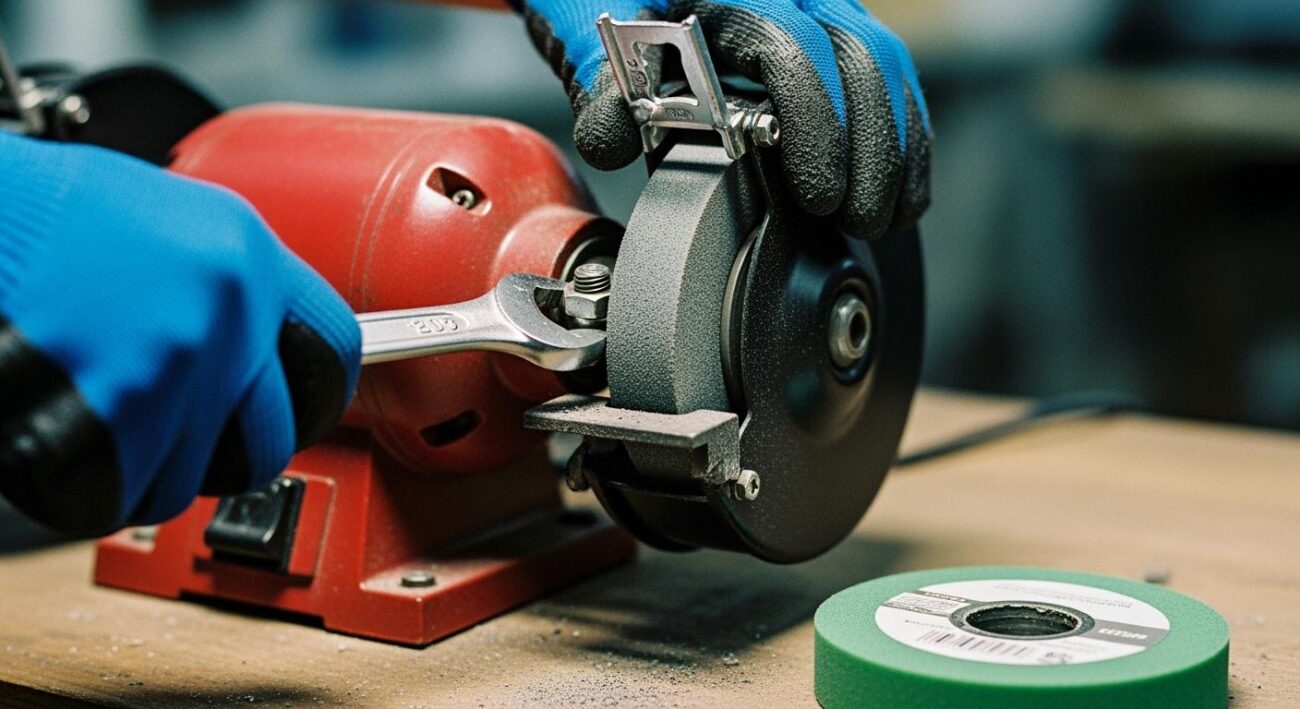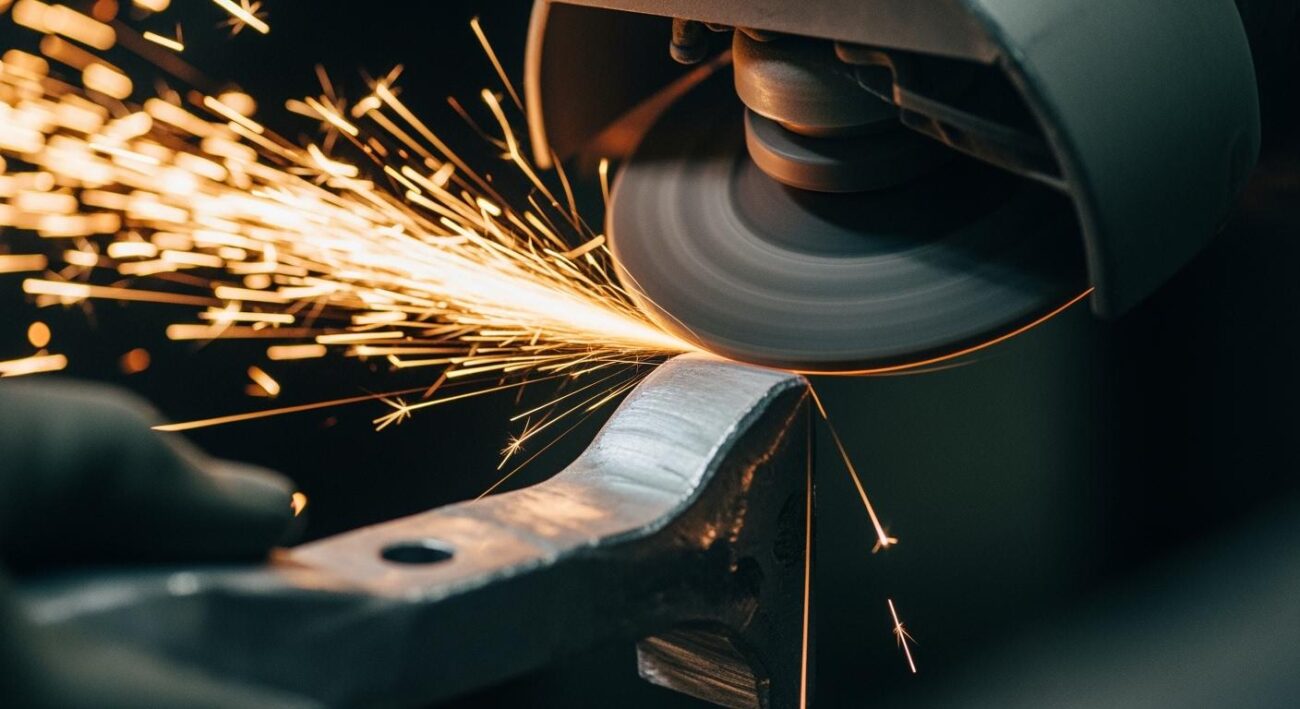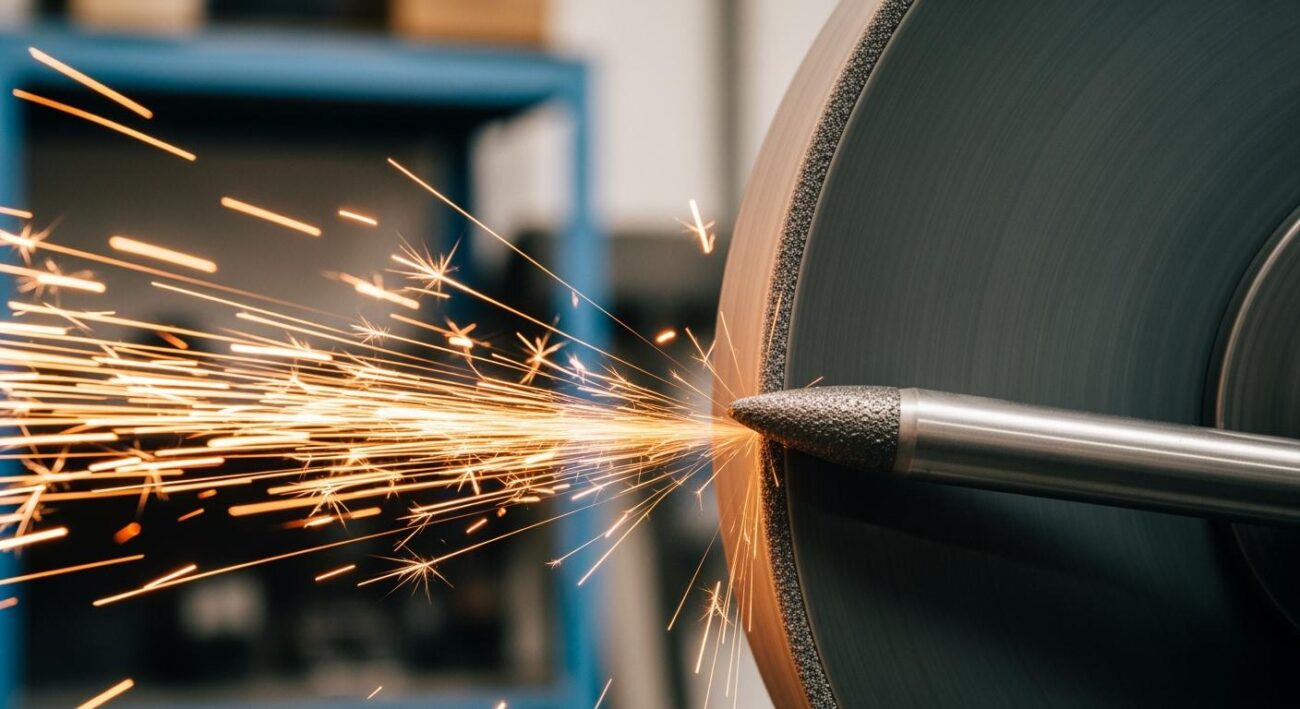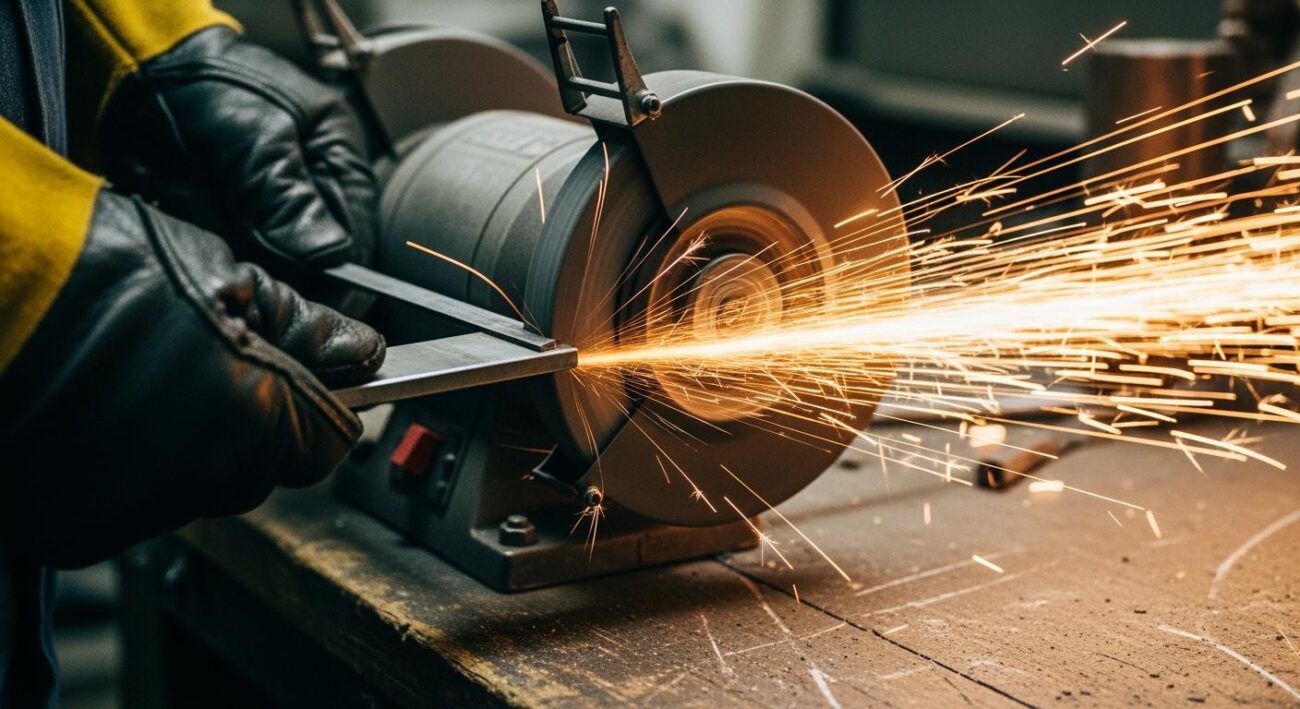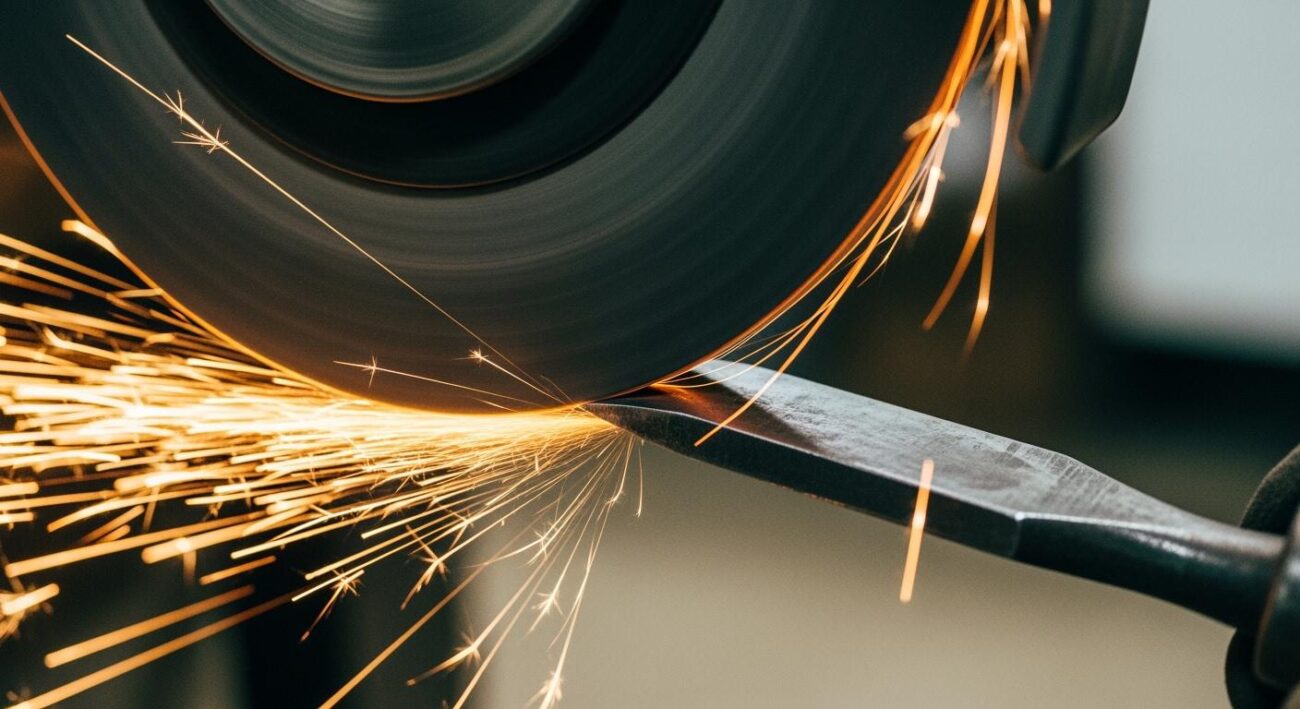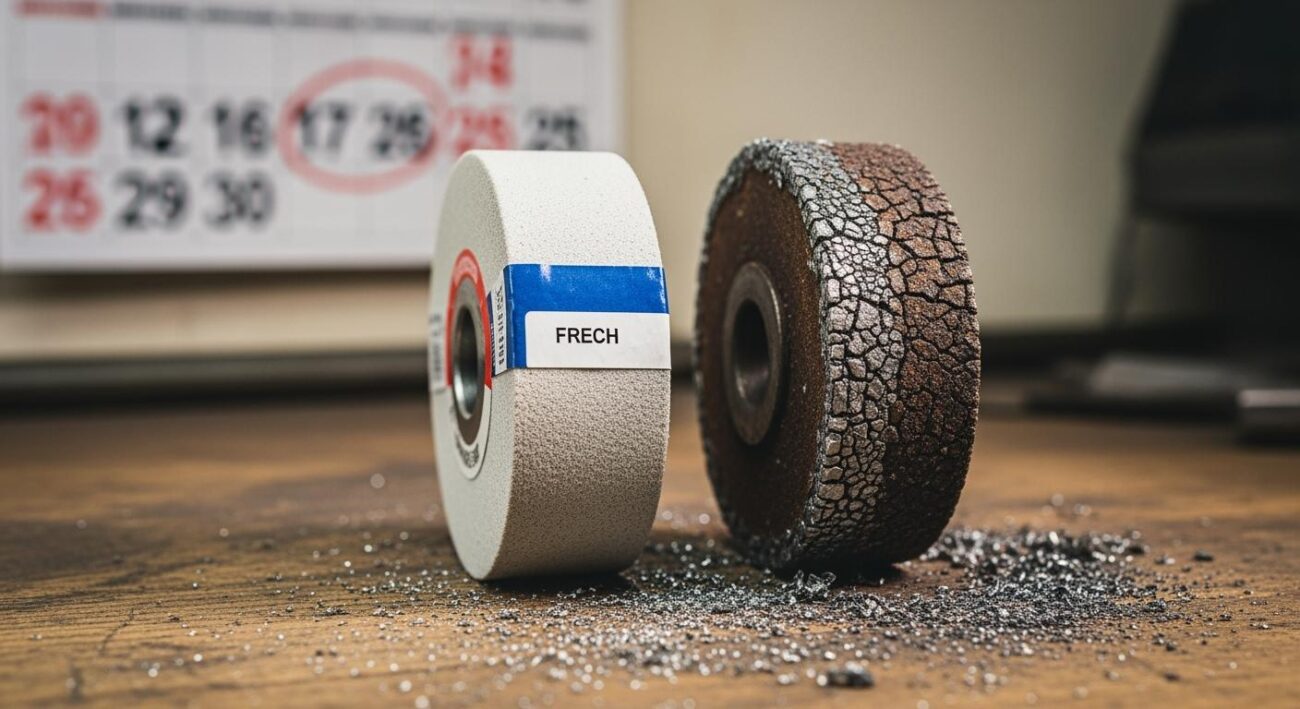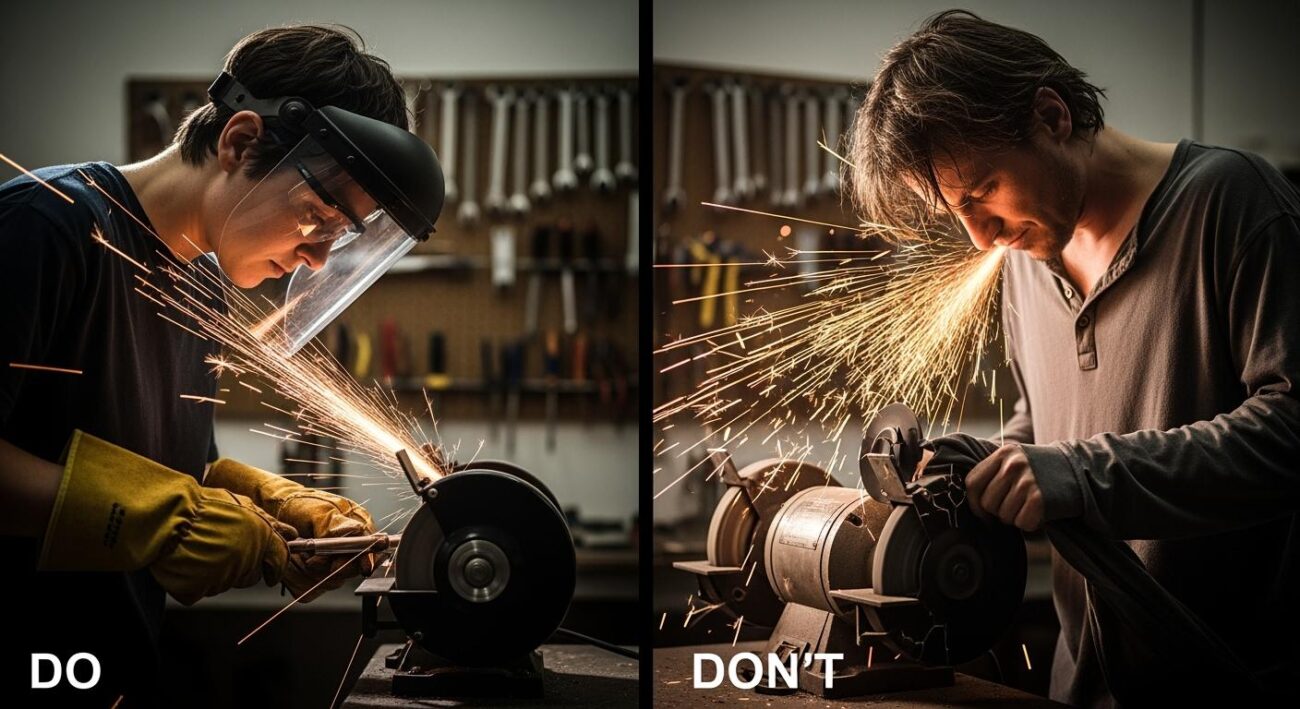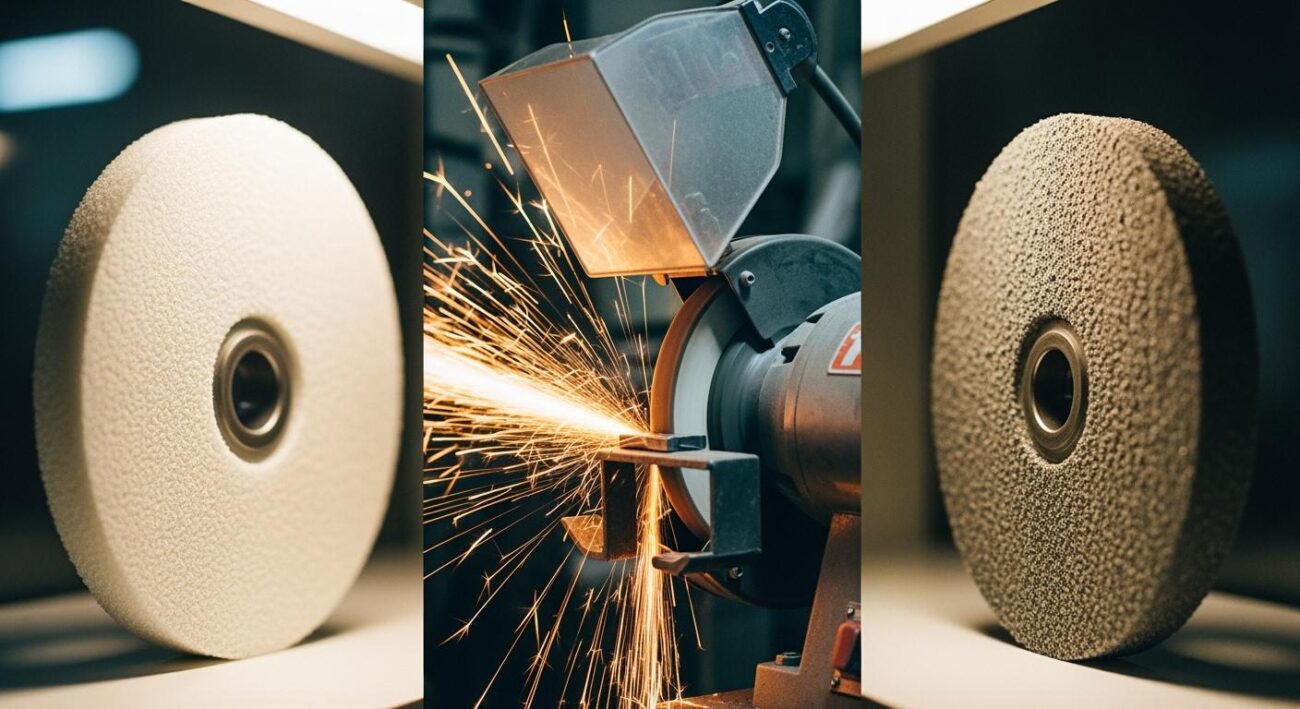You should never use the side of a standard, straight grinding wheel. These tools are only designed for grinding on their outer edge. Applying pressure to the side creates a serious risk.
Warning: Standard wheels are not built to handle side pressure, also known as axial load. This force can cause the wheel to shatter violently, sending dangerous fragments flying and leading to severe injury.
While standard wheels are unsafe, some wheels are specifically made for side grinding. These often have a depressed-center design, allowing them to handle the unique stresses of this work safely.
Key Takeaways
- Never use the side of a standard grinding wheel. It is very dangerous and can cause the wheel to break apart.
- Standard grinding wheels are only for grinding on their outer edge. They are not strong enough for side pressure.
- Using the wrong wheel for side grinding can hurt you, damage your work, and break your tools.
- Some special wheels are safe for side grinding. These wheels have different shapes and are built stronger.
- Always check the wheel’s label or instructions. This tells you if it is safe for side grinding.
Dangers of side grinding a standard grinding wheel
Using the side of a standard wheel is a dangerous shortcut. You might think it saves time, but it introduces serious risks to you, your workpiece, and your equipment. Understanding these dangers will help you stay safe in the workshop.
The risk of wheel shattering
The most severe danger is the wheel exploding. Standard wheels are built to handle force on their outer edge, not their sides. Here’s why side pressure is so hazardous:
- Designed for Radial Stress: A standard grinding wheel contains fiberglass reinforcement. These fibers are oriented to resist radial stress, which is the force created as the wheel spins and grinds on its periphery. However, these fibers offer very little strength against axial stress—the side-to-side pressure you apply during side grinding.
- Centrifugal Force: Your grinder spins at thousands of RPM. This rotation creates immense centrifugal force, pulling the wheel’s mass outward from the center. This force increases with the square of the speed, so a small speed increase creates a huge jump in stress.
- The Breaking Point: When you apply side pressure, you introduce a force the wheel was never meant to handle. This axial load, combined with the intense centrifugal force, can easily exceed the wheel’s structural limits.
A wheel breakage is incredibly violent. There are documented cases where a shattered wheel broke the heavy cast iron tub of an industrial grinder. This shows the immense power released during a failure. Even a small amount of side pressure can weaken the wheel and lead to a catastrophic explosion.
Creating an incorrect surface finish
Even if the wheel doesn’t break, you will not get the flat, precise surface you want. Side grinding with the wrong wheel ruins your workpiece.
The heat from grinding causes the metal surface to expand. As it cools, it contracts unevenly and results in a concave, or dished, shape. Applying pressure to the side of a standard wheel also removes material from one side of your part. This can release internal stresses within the metal, causing the machined side to become convex, or bowed.
Furthermore, this improper use causes the wheel itself to wear unevenly. An unbalanced wheel leads to several problems:
- Reduces the wheel’s cutting efficiency.
- Creates chatter marks and other defects on your workpiece.
- Shortens the wheel’s operational life, costing you more money.
Damage to the grinder and guards
The danger of side grinding extends to your machine. The axial load you create puts immense stress on components that are not designed for it.
Your grinder’s spindle and bearings are made to support a spinning wheel, not to resist strong sideways pushing. This axial force can cause the bearings to fail quickly, leading to costly repairs and machine downtime. In some cases, an accidental impact can create a significant axial load that destroys the spindle assembly.
Safety guards also become a point of failure. OSHA regulations specify that guards must cover the wheel’s periphery and sides to contain fragments from a peripheral burst. They are not designed to withstand a direct impact from the side of a wheel. Applying side pressure can damage the guard, misalign it, or break it entirely, leaving you unprotected.
Safe side grinding with the right wheel
While you must avoid side grinding with a standard wheel, the technique itself is a valuable and common practice in many workshops. The key is using a wheel specifically engineered for the job. Expert brands like Aimgrind specialize in creating custom abrasive solutions, ensuring you have the right tool for any task, including safe side grinding.
Wheels designed for side pressure
Wheels made for side grinding have different shapes and reinforcements. They are built to handle the axial forces that would destroy a standard wheel.
One key design feature you might see is a recess. Recesses are indentations on one or both sides of the wheel. A grinding wheel with recesses on both sides provides a very stable and consistent surface. This design is crucial when you need to achieve precise and accurate results on your workpiece.
You will most often see cup-shaped wheels used for side grinding.
- Type 6 Straight-Cup Wheels: These look like a cup with straight walls.
- Type 11 Flaring-Cup Wheels: These are explicitly designed for side grinding. Their walls flare outward from the back, providing a wide, stable grinding face. The rules for using Type 11 wheels are very similar to those for Type 6 wheels, showing their related functions.
For high-performance industrial applications, you need a wheel that offers maximum durability and precision. When grinding extremely hard materials like ceramics, hard alloys, and composites, professionals turn to solutions like Aimgrind’s diamond grinding wheels. These advanced wheels are engineered for superior material removal and a long service life, making them a prime example of a tool built for demanding side-grinding tasks.
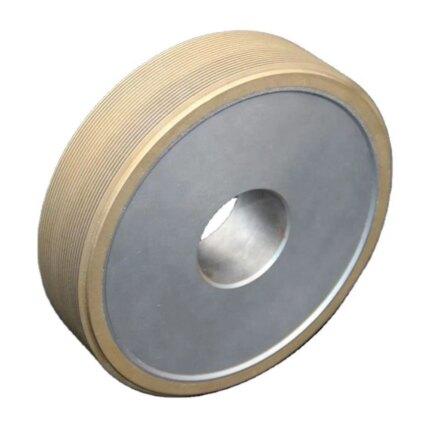
Understanding wheel type numbers
The American National Standards Institute (ANSI) created a numbering system to classify wheel shapes. Knowing these numbers helps you quickly identify a wheel’s intended use.
Tip: Always look for the type number printed on the wheel’s blotter (the paper label) or in its documentation. A Type 1 wheel is never safe for side grinding.
Here are some common wheel types you might encounter:
- Type 1: Straight Wheel (for peripheral grinding only)
- Type 11: Flaring Cup Wheel (for side grinding)
- Type 27: Depressed Center Wheel (common on angle grinders, allows for face grinding)
- Type 28: Saucer-Shaped Wheel
- Type 29: Flexible Wheel
The most basic difference is between a wheel made for grinding on its edge versus one made for grinding on its face. The table below compares the standard Type 1 wheel with a Type 2 cylinder wheel, which uses its face for grinding.
| Feature | Type 1 Straight Wheel | Type 2 Cylinder Wheel |
|---|---|---|
| Shape | Disc-shaped with a flat surface | A cylinder with no central mounting hole |
| Mounting | Mounts through a central hole | Sits on a wide, flat mounting plate |
| Primary Use | Surface, cylindrical, and bench grinding | Creating flat surfaces on a workpiece |
| Contact Point | Outer edge (periphery) | Front face (side) |
Applications for proper side grinding
With the correct wheel, side grinding becomes a precise and efficient technique for many tasks. You can achieve finishes and shapes that are impossible with peripheral grinding.
One of the most common uses is sharpening tools. Tool and cutter grinders use cup wheels to restore a sharp edge on a variety of cutters. These include:
- Drills
- End mills
- Reamers
- Taps
Precision surface grinding is another key application. You can use the face of a cup or cylinder wheel to make the sides of a metal block perfectly square and parallel. This is essential in die manufacturing, where accuracy is critical. You can also use this method to make the end of a rod perfectly perpendicular to its sides. To do this, you might mount your workpiece in a tool maker’s vice and grind one side flat, then rotate it to grind the other sides square and parallel to each other.
How to identify a wheel safe for side grinding
You can protect yourself by learning how to spot a wheel made for side grinding. Manufacturers provide several clues on the wheel and in its packaging. You just need to know where to look. Checking these details before you mount a wheel is a critical safety habit.
Checking the manufacturer’s blotter
The paper label in the center of a grinding wheel is called the blotter. This small circle contains vital safety information. You should always inspect it carefully.
Safety First: The blotter often uses icons to communicate hazards. Look for a symbol showing a wheel with a cross through its side. This is the universal sign for “no side grinding.”
Manufacturers also use the blotter to show proper use. You might see icons that tell you which machine to use or the correct angle for grinding. A blotter may also display the wheel type number, such as Type 11, which confirms it is safe for side grinding.
Reading product documentation
Your wheel’s packaging and online resources offer detailed information. Manufacturers like Makita provide a technical documents page on their websites. Here, you can find Safety Data Sheets (SDS) for specific models. These documents clearly state the intended use and limitations of the product.
You can find the SDS for your wheel by searching for its model number. This documentation will confirm if the wheel is designed for peripheral grinding only or if it can handle side pressure. Always take a moment to find and read this information before starting a job.
Looking for specific wheel markings
Every wheel has a code printed on it that acts like a recipe. This string of letters and numbers tells you everything about its construction. Understanding this code helps you choose the right tool for your material and task.
For example, a code like A60V breaks down like this:
- A: The abrasive is Aluminum Oxide.
- 60: The grit size is 60 (a medium grit).
- V: The bond type is Vitrified.
A more complex code like WA 60 K 7 V gives you even more detail, including the wheel’s hardness (K) and structure (7). The most important number for side grinding is the shape type, such as ISO Type 41. Learning to read these codes empowers you to work safely and effectively.
Remember the most critical safety rule: never use the side of a standard bench grinding wheel. Side grinding is a valid technique, but you must perform it with a wheel specifically manufactured for that purpose. Experts like Aimgrind offer specialized solutions for these tasks.
Always check your wheel’s specifications before mounting and using it. Prioritize your safety above all else.
FAQ
Can I ever use the side of my bench grinder wheel?
No. You should never use the side of a standard bench grinder wheel. These wheels are only made for grinding on their outer edge. Using the side is extremely dangerous and can cause the wheel to shatter.
How do I know if a wheel is safe for side grinding?
You can check the wheel’s label for its type number. Wheels like Type 11 (flaring cup) or Type 27 (depressed center) are made for side grinding.
Remember: A Type 1 wheel is never safe for side grinding. Always check the manufacturer’s specifications.
What makes side grinding on the wrong wheel so dangerous?
Standard wheels are not built to handle side pressure. This force can easily break the wheel as it spins at high speed. A shattered wheel sends sharp fragments flying, which can cause severe injury.
What about angle grinders? Don’t you grind on the face?
Yes, but angle grinders use specific wheels, like Type 27 depressed-center wheels. Manufacturers design and reinforce these wheels for face grinding. You must always match the wheel type to your tool and your job.
Contact Us
For More Grinding Solution or Customized Abrasive Tools

